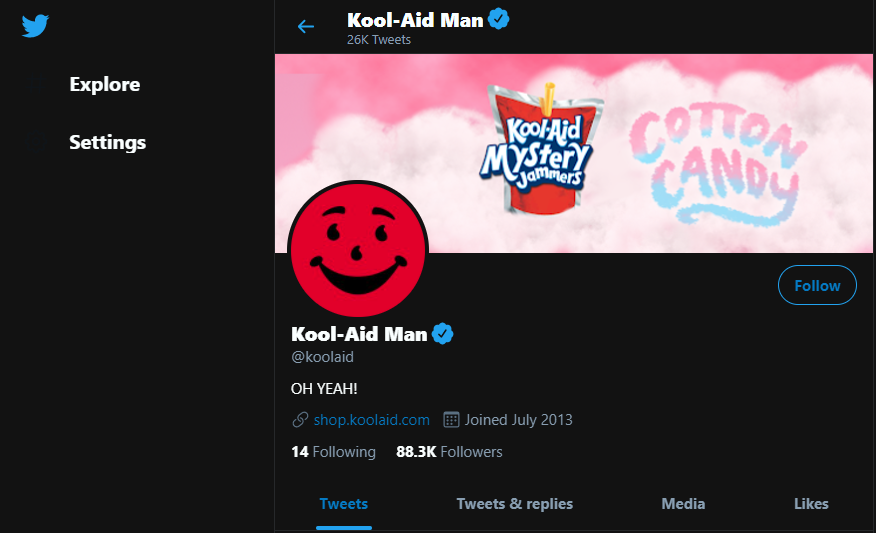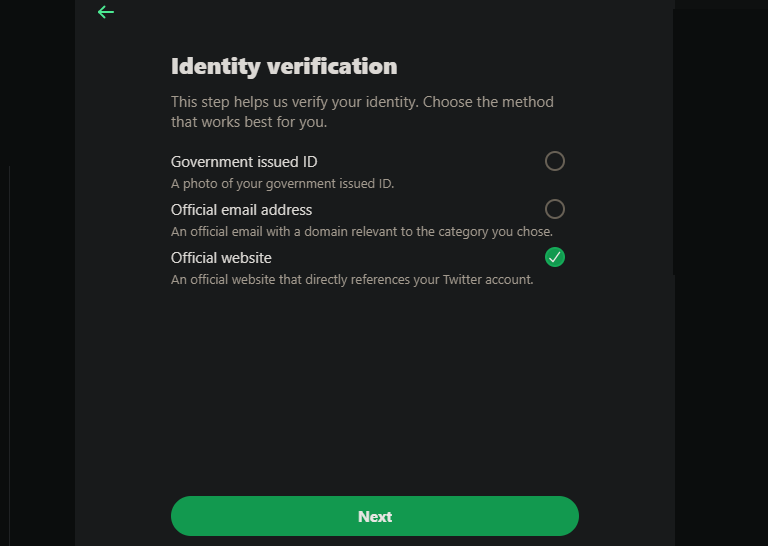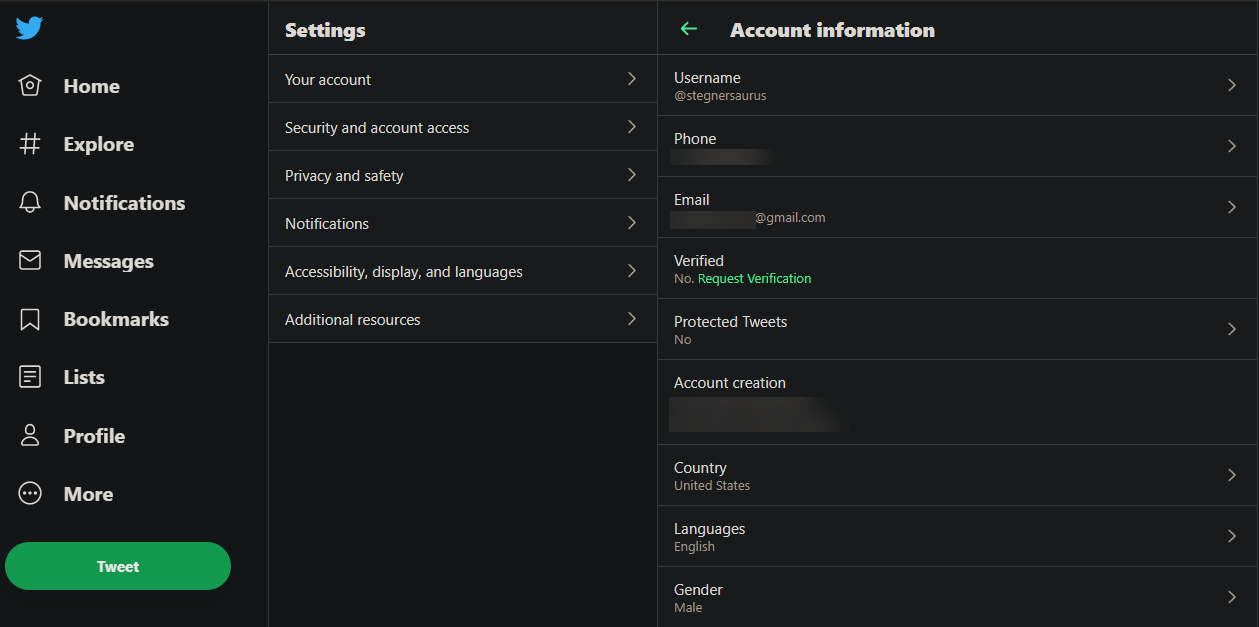Twitter, like most social media platforms, offers a verification system. Its purpose is to clearly identify legitimate high-profile accounts, proving that other users can trust who that account claims to represent.
In May 2021, Twitter re-opened the verification process to everyone. Here’s how to apply for Twitter verification, and what you should know about the process.
A Brief Timeline of Twitter Verification
When Twitter started the verification program in 2009, it only verified accounts of its own choosing. In 2016, the company changed this by opening up verification requests to everyone.
Later, in 2017, Twitter suspended the verification process, so you could no longer request the blue check yourself. Many people felt that the site providing verification implied that Twitter endorsed the verified account, which was not the company’s intention. Since this time, Twitter claims to have worked to resolve this, though it’s not exactly clear what changed.
In May 2021, Twitter reopened verification requests. After a brief few days where Twitter paused verification to catch up on the influx of requests, anyone on Twitter can now request verification again.
Let’s look at how you can request a blue check mark or tick from Twitter.
How to Request Twitter Verification
You can request Twitter verification either through the mobile app or the web interface.
If you want to walk through the verification form on your phone, open the Twitter app and switch to the Home tab at the bottom. Slide out the left menu and choose Settings and privacy, then tap Account. Here, you’ll see a Verification request field. Tap this to begin.
To request verification on Twitter’s website, click More on the left sidebar and choose Settings and privacy. Choose Your account, followed by Account information. To open this page, you may need to confirm your Twitter password. Once it’s open, click Request Verification under Verified.

After either option, choose Start request to begin. If Twitter currently has verification paused, you may see a message that verification requests are unavailable at this time. Check back later if this is the case.
General Requirements for Twitter Verification
In addition to the below criteria we’ll look at, Twitter has a few general requirements for all verified accounts. They are:
- Your account must have a name and profile picture.
- You must have logged into your account in the last six months.
- You must have a confirmed email address or phone number.
- You cannot have had a Twitter lockout for violating the rules in the past 12 months, unless you successfully appealed it.
Certain types of accounts are not eligible for verification. Twitter will not verify parody, news feed, commentary, or unofficial fan accounts. It also won’t verify any account involved in spam or manipulation, such as those that sell followers. Finally, any account associated with coordinated harmful activity or that violates Twitter’s hateful content policy cannot be verified.
It also doesn’t provide verification to pets or fictional characters, unless they are directly connected to a verified brand or entertainment production.

The Types of Twitter Accounts Eligible for Verification
To be verified on Twitter, your account must fall into one of six categories:
- Activist, organizer, or influencer: Twitter defines these as people who use the platform to “bring awareness, share information, and galvanize community members around a cause.”
- Company, brand, or organization: This is for accounts that represent brand names, corporations, and similar. It also includes leaders and other prominent people from these organizations.
- Entertainers and entertainment groups: In addition to major entertainment organizations like TV networks and film studios, this group also includes individual artists, directors, and performers. Twitter also says that digital content creators may be verified if they have consistently published original content for at least six months and meet notability requirements.
- Government official or affiliate: People who are currently government officials, ambassadors, official candidates, or similar.
- Journalist or news organization: This includes official accounts of “qualifying news organizations,” plus any journalist working for them. Eligible types of organizations include newspapers, cable or streaming stations, podcast hosts, and similar. Freelance journalists can be verified if they can provide enough writing credits.
- Professional sports or esports entity: The last group is for professional sports teams and their athletes, as well as coaches. It also includes esports leagues and players, as long as they have enough references in certain publications.
It should be pretty clear which group you fall into. The requirements you need to meet depend on what you pick here, so be sure to choose the right option.
If you don’t fit into any of these categories, Twitter probably won’t verify you. Keep an eye out for the company opening up more types of accounts for verification in the future.
Providing References for Verification
Next, you’ll need to provide Twitter with evidence that you are a notable account, based on the category you chose above. See Twitter’s verified account help page for more info.
For example, if you chose the activist option, you’ll need to provide a link to a Wikipedia article about you, three recent links from reputable news sources that cover you, or a Google Trends profile that shows people have searched about you recently.

Depending on what you pick, the page may immediately say that you don’t meet the follower or mention requirements. If this is the case, you’ll need to either pick another category or build up your account further.
Verify Your Identity
Next, Twitter needs to verify that you’re legitimate. It provides three ways for you to do this:

- Government issued ID: Upload a picture of an ID, like a driver’s license or passport.
- Official email address: To use this option, your Twitter email address must be from an official domain, like a .gov address or the domain of your employer. If you have a general email address for your account (like Gmail), you can’t use this method.
- Official website: Provide a link to an official website that directly references your Twitter account.
Finalizing Your Twitter Verification
Once you’re done with the form, you’ll see a Review and submit page. Confirm that the details you’ve entered are correct, then hit Submit to send in your verification request.

Twitter states that all requests are reviewed by a human and that it may take a few weeks to process your application. You will get an email and notification to let you know that Twitter received your request. Once the company makes a decision, another email will let you know if Twitter accepted your application.
If you’re rejected, you can reapply for verification again after 30 days. Keep in mind that Twitter doesn’t mention any specific reasons for rejecting applications, so you won’t know where your account fell short.
What Happens When You’re Verified?
If you get the blue check from Twitter, congratulations! You now have greater credibility on your account and can brag to your friends about your badge.
However, there’s not a ton of practical change that happens when you’re verified. As one example, you’re able filter replies on your tweets to only show other verified users. We’ve looked before at what having a blue tick actually means, if you’d like more info. Other than this, most of the benefits of being verified are simply showing other users that you aren’t a fake account and are of some consequence.
One extreme circumstance that affected verified accounts was in July 2020, when many high-profile Twitter accounts were hijacked to tweet bitcoin scams. In response to this, Twitter temporarily prevented all verified accounts from posting in order to contain the scam.

Losing Your Verification Status
Twitter verification isn’t permanent; you may lose it for various reasons. Some of these include:
- Changing your account’s @ username
- Letting your Twitter account become inactive
- Leaving the position you were verified for, such as a government official stepping down from office, if you don’t meet other verification criteria
- Misleading people by changing your bio or name on Twitter
- Breaking Twitter’s rules around spam, sharing private information, abuse, and similar
Good Luck Getting Verified on Twitter
Now you know everything about applying for verification on Twitter. Unless you’re a notable account in one of the categories above, it’s probably not worth applying for the blue tick. But if you fit into one of those groups, give it a try and see if Twitter will verify your account.
Whether you get verified or not, there are always some practical ways to boost your standing on Twitter.
Image Credit: Pasuwan/Shutterstock

